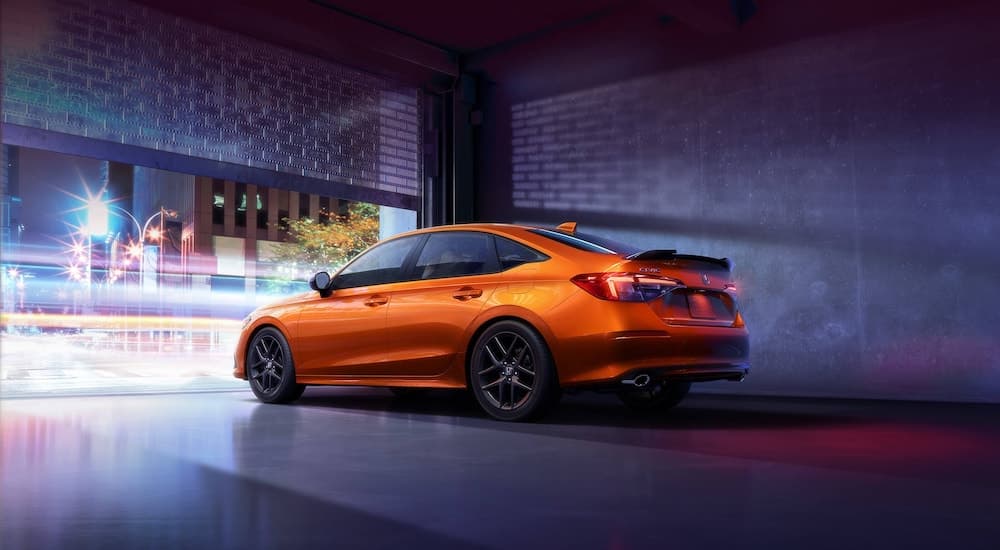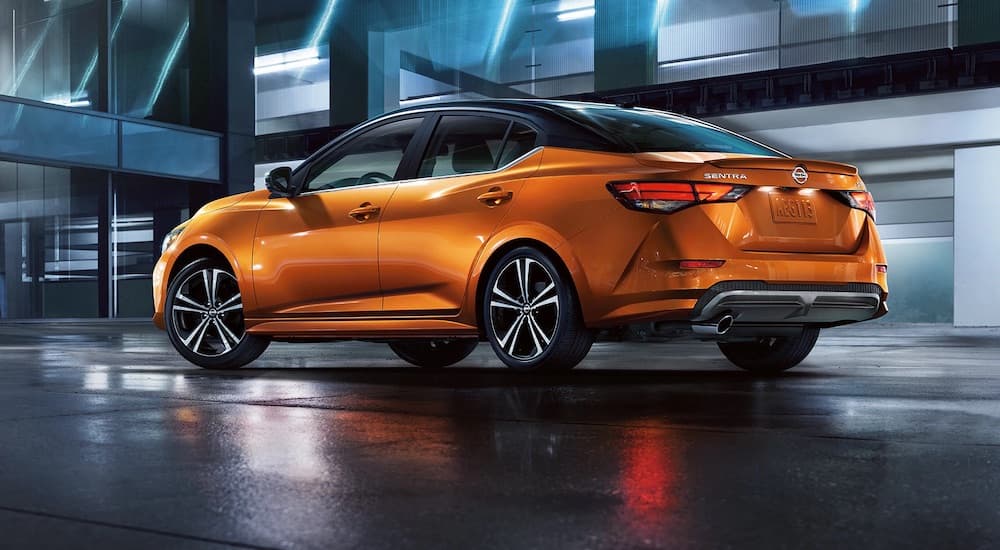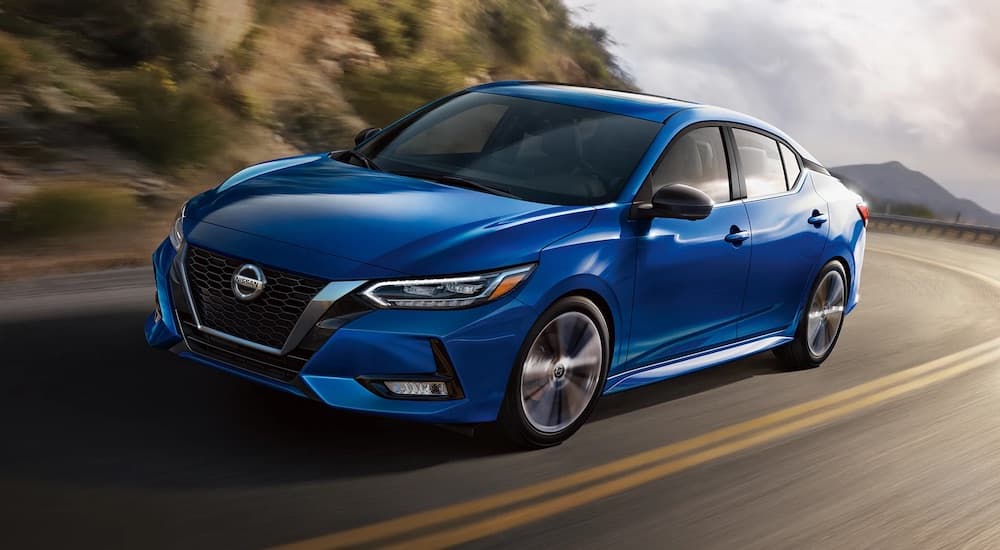It seems like spacious SUVs and rugged pickups dominate today’s auto market. While this is certainly true in some respects, there is still one tried-and-true vehicle that has endured throughout the history of automobiles: the four-door sedan. So, where does this leave us in the year 2023?
Well, sedans continue to offer an affordable, fuel-efficient option for those not looking for an enormous vehicle but still want to take advantage of all the tech associated with modern vehicles. Drivers navigating the current auto market for a great sedan have likely come across the 2023 Nissan Sentra vs 2023 Honda Civic matchup—a highly promising pairing.
These two standout models have proven themselves over the decades. Both are household names synonymous with value and reliability, and their perpetual refinement has continued into the 21st century; both have plenty to offer, but is one model a better choice? Let’s take a closer look at these two vehicles and see how they differ…
Performance Review
While performance may not be at the top of the list of needed features when compared to, say, a pickup truck, it’s still a component worth researching—and both of these models offer their own unique engine options and capabilities.
Perhaps the best way to describe the 2023 Nissan Sentra‘s performance options is “simple.” The Sentra offers a sole engine option in the form of a 2.0L four-cylinder engine that produces 149 hp and 146 lb-ft of torque; it comes only in front-wheel drive, which is not surprising for a sedan. Nissan’s no-nonsense approach to performance will certainly be appreciated by anyone not interested in spending countless hours trying to narrow down which engine will best suit their needs. (We are talking about a compact sedan, after all.)
For the 2023 Honda Civic, a little more variety is offered regarding engines, but not much. Its standard engine is also a 2.0L four-cylinder engine, providing a little more power with 158 hp but taking a dip in torque with 138 lb-ft. (As you can see, there’s not a huge difference in terms of standard engine specs between the two models.) The Civic, however, offers another option with its turbocharged 1.5L four-cylinder engine, which produces 180 hp and 177 hp.

While not a huge variety, Honda does give consumers the ability to choose their performance preference, even if it’s just two engines. Overall, these differences will depend on the driver’s tastes; some may gravitate towards the Civic’s variety, while others may appreciate the simplicity offered by Nissan.
As expected, both models provide the level of fuel efficiency one would expect from a compact sedan, allowing drivers to make fewer stops at the pump and keep more money in their wallets. For the 2023 Sentra, you can expect to get roughly 29 MPG in the city and 39 MPG on the highway with its single 2.0L engine—great numbers for those looking to get the most out of their dollar.
Looking at the Civic, its standard 2.0L engine will get you 31 MPG in the city and 40 MPG on the highway. With the available 1.5L engine, those numbers get a slight bump, getting 33 MPG in the city and 42 MPG on the highway. There are no drastic differences in fuel economy here; both the Sentra and Civic are great commuter cars and are sure to earn their worth daily on the way to work. These choices in performance will essentially boil down to the driver’s personal preference.
Comfort & Convenience
Probably the top use for any compact sedan is the daily commute. Whether you work right down the street from where you live or spend an hour on the highway in both directions, you want your time behind the wheel to be comfortable. Nissan and Honda both understand the needs of commuters and have equipped their models with an assortment of comfort and convenience features.
When you step into a vehicle, what immediately sets the tone when it comes to comfort? Of course, the seats! Nissan has thus equipped the Sentra with Zero Gravity seats designed to replicate the weightlessness of space to reduce driver fatigue—a feature that will undoubtedly enhance those long journeys on the open highway. This comfort is further elevated with enhancements like a Dual Zone Automatic Temperature Control and an available six-way power-adjustable driver’s seat with lumbar support. Throw in a 7.0-inch touchscreen, Apple CarPlay and Android Auto compatibility, and a Bose Premium Sound System, and those morning commutes with fly by!
The 2023 Honda Civic also comes packed with an array of comforts to make any drive an engaging one. While not as innovative as the Sentra, comfortable seating is provided throughout the cabin, including an available eight-way power-adjustable driver’s seat, as well as heated front seats on higher-end trims. Trims like the EX and Touring add a heightened sense of luxury with the inclusion of leather trimming. Other driving enrichments include a similar Dual-Zone Automatic Climate Control System and an available Bose Premium Sound System.
As you can see, there are a lot of parallels between the Sentra and Civic when it comes to comfort and convenience; however, the Sentra offers a slight edge over the Civic with its attention to detail, as demonstrated by the innovative Zero Gravity seats. If your daily drive demands an elevated level of comfort not seen in most compact sedans, consider the Sentra a worthy contender.
Comprehensive Safety
Comfort and convenience can make any journey great, but without a sense of protection on board, that comfort is meaningless. You want to know that, wherever you go, your vehicle is looking out for you. Luckily, when it comes to both models, you can take advantage of an array of innovative safety and driver assistance features.
For the Sentra, this is offered in the standard Safety Shield 360 suite, an extensive package of tools that include Automatic Emergency Braking with Pedestrian Detection, Blind Spot Warning, and Rear Automatic Braking. Whether you’re changing lanes on the highway or backing into a space in a busy grocery store parking lot, the Sentra will always have an extra set of eyes looking out for you, no matter what the driving situation is.
The Civic comes equipped with its own safety package, courtesy of the Honda Sensing suite. Like the Sentra, it’s also packed with a host of great features like the Collision Mitigation Braking System, Road Departure Mitigation System, and Lane Keeping Assist System. Like the Safety Shield 360, the Civic has you covered on the road, ensuring that every move you make is a safe one.
Overall, it’s a tie between both models in regards to safety; their packages are extensive and will offer you the enhanced confidence you’re looking for in a four-door sedan.
Two Exceptional Compact Sedans
The Sentra and Civic both offer unique features while sharing similar efficiency, comfort, and safety qualities. Ultimately, choosing between them will depend on the needs of the driver.
If you’re looking for variety in performance options, the Civic may be your best bet. Is comfort at the top of your list of must-have features? The Sentra’s enticing Zero Gravity seats may be worth experiencing for yourself. No matter which model you choose for your daily drive, you’re going to get great gas mileage, enhanced comfort, and the security of knowing that your vehicle is looking out for you no matter where your journey takes you—which is what most drivers want in their compact sedan.





